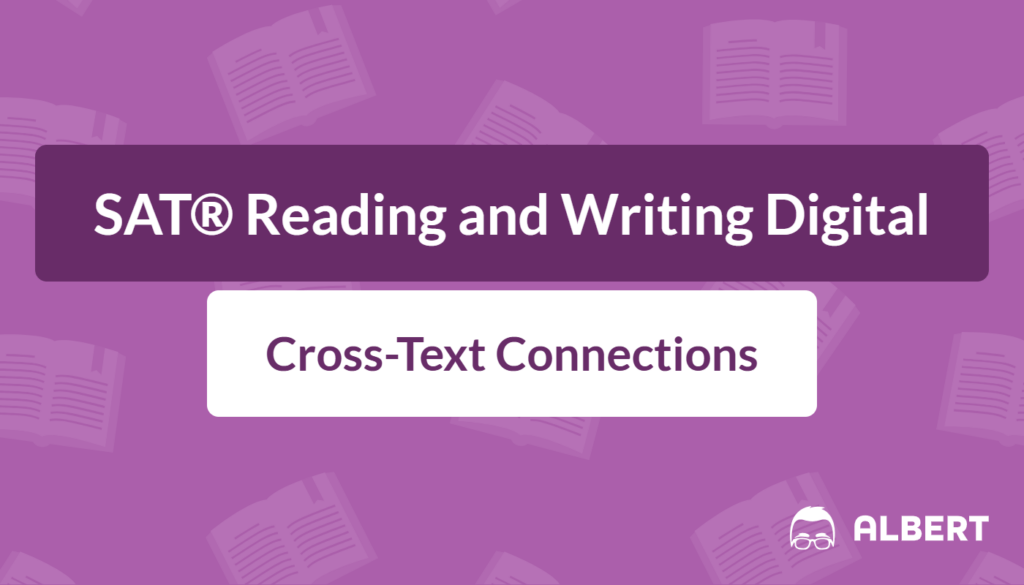What We Review
Introduction
The ability to compare and contrast texts is a key skill tested in the SAT® Reading and Writing sections. It helps readers identify similarities, spot differences, and understand each author’s unique viewpoint. By learning how to examine more than one passage at a time, students can grasp the central themes more clearly.
Moreover, practicing this skill boosts comprehension and analytical thinking. It also helps students form well-organized answers and sharpens reasoning abilities. This guide offers step-by-step strategies, examples, and practice questions designed to improve compare-and-contrast skills for any type of reading passage.
Understanding Compare and Contrast Text Structure
To compare means to identify what is similar between two texts. Meanwhile, to contrast means to highlight the differences. These terms go hand in hand when analyzing the perspectives presented by multiple authors.
It is important to compare and contrast texts because it deepens understanding and helps readers see diverse angles on the same topic. Therefore, it is crucial to identify what authors share in common and how they differ. This skill often appears on the SAT® exam when questions ask about central ideas, style, or tone across multiple passages.
Key Strategies for Comparing and Contrasting Texts

1. Identify the Central Idea
- Read each text carefully.
- Note the main idea of each piece.
- Write one-sentence summaries for clarity.
These steps help keep track of what each author wants to communicate. It is helpful to label these summaries as “Text 1’s Main Idea” and “Text 2’s Main Idea.”
For instance, consider two short passages about nutrition.
- Text 1’s main idea: “A balanced diet with fruits and vegetables leads to better health.”
- Text 2’s main idea: “Nutritional needs vary depending on age and activity level.”
Step-by-step:
- Focus on the first text’s main message: balanced diet and health.
- Summarize it in one sentence, then do the same for the second text: varying nutritional needs.
2. Look for Points of View
Point of view refers to the perspective from which the text is written. Identifying this can reveal biases or unique approaches the author might have.
- Ask: Does the author favor a certain idea or strategy?
- Notice the author’s tone. Is it optimistic, cautious, or critical?
For example, if one author discusses environmental protection in an urgent tone, that suggests a sense of immediate responsibility. Another author might approach it from a purely economic standpoint, focusing on costs and benefits.
Step-by-step:
- Read with an eye on language suggesting attitude (e.g., “must,” “vital,” or “perhaps”).
- Compare how each text’s tone shapes the overall point of view.
3. Highlight Similarities and Differences
After identifying each text’s main idea and point of view, make a list or use a Venn diagram. On one side, jot down what is unique to Text A. On the other, note what is unique to Text 2. In the overlapping section, write shared features.
For instance, Text 1 may highlight how using public transportation reduces pollution, while Text 2 may talk about eco-friendly car technology. Both might agree that cutting emissions is essential.
Step-by-step:
- Split a sheet of paper into overlapping circles.
- Fill in similarities in the middle.
- Place distinct points on each side.
- Look for any ideas repeated or argued differently.
4. Make Cross-Text Connections
Cross-text connections refer to meaningful links that emerge when reading two or more texts on the same topic. These connections might include shared themes, repeated references, or similar conclusions.
For example, if both texts emphasize the need for community action, that becomes a critical connection. Such links can appear in key concepts, examples used, or proposed solutions.
Step-by-step:
- Identify recurring themes (e.g., cooperation, responsibility, sustainability).
- Determine how these themes relate to each text’s main idea.
- Use these connections to craft a cohesive analysis that describes the relationship between the two texts.
Example Analysis: A Step-by-Step Approach
Text 1 and Text 2 Overview
Imagine two brief passages focused on environmental preservation:
- Text 1: Highlights how local conservation groups protect nearby forests. It uses statistics showing the reduction in deforestation.
- Text 2: Discusses the global impact of pollution and suggests international policies to curb emissions.
1. Identifying the Central Ideas
- Text 1’s main idea: Local actions, such as community-driven forest programs, can limit deforestation.
- Text 2’s main idea: Global cooperation is necessary to fight pollution and climate change.
2. Analyzing Points of View
- Text 1’s point of view: Emphasizes the power of grassroots movements.
- Text 2’s point of view: Shows that large-scale policies matter most.
Both place importance on protecting natural resources, yet they focus on different scales of action (local vs. global).
3. Drawing Connections
- Similarities: Both discuss the need to preserve the environment. Both mention the importance of reducing harmful emissions.
- Differences: Text 1 centers on forests, while Text 2 focuses on broad, international regulations.
4. Conclusion of Analysis
The combined reading suggests that local initiatives thrive when supported by global measures. Readers can see that while grassroots efforts are effective, large-scale cooperation can produce widespread change.
Practice Questions
Below are questions to practice about comparing and contrasting. These passages are about public health:
Passages:
- Passage 1: Argues that regular exercise is the key to longevity.
- Passage 2: Emphasizes a nutrient-rich diet as the most important factor in overall well-being.
- Question: Which choice best describes how the perspectives in these passages differ?
- A) Passage 1 prioritizes dietary changes over exercise, while Passage 2 describes a balanced approach.
- B) Passage 1 focuses on physical activity as essential for long life, while Passage 2 highlights dietary habits.
- C) Passage 1 supports dietary supplements over natural foods, while Passage 2 explores the dangers of unhealthy eating.
- D) Passage 1 and Passage 2 both recommend identical methods for improving health.
- Step-by-step solution:
- Identify the main idea of Passage 1 (regular exercise as key).
- Identify the main idea of Passage 2 (nutrient-rich diet as key).
- Compare how they differ: one highlights exercise, the other underscores diet.
- Answer: B
Practice Problem to Try:
Passages:
- Passage 1: Claims early intervention in schools can reduce bullying rates.
- Passage 2: Suggests parental involvement at home is the most effective method for stopping bullying.
Question: Which sentence best expresses the different approaches in these passages?
Step-by-step method:
- Summarize the viewpoints.
- Identify how each passage addresses bullying prevention.
- Choose an answer that reflects the difference between school-based and home-based solutions.
Common Mistakes to Avoid
- Over-focusing on one text while ignoring the other.
- Listing facts instead of analyzing how they compare.
- Forgetting to mention each author’s purpose or point of view.
- Missing cross-text connections that tie the messages together.
- Mixing up details from the two passages, causing confusion in the final analysis.
Quick Reference: Vocabulary for Compare and Contrast
| Vocabulary | Definition |
| Compare | To identify the similarities between texts |
| Contrast | To highlight the differences between texts |
| Point of View | The perspective from which the text is written |
| Theme | The central topic or idea explored in a text |
| Cross-Text Connection | A link made between two texts based on themes or ideas |
Conclusion
The SAT® Reading and Writing sections often require students to draw meaningful connections and comparisons between two texts on the same topic. By identifying main ideas, examining points of view, and recognizing shared or divergent themes, readers can better analyze each author’s unique viewpoint.
Cross-text connections help connect smaller details into a bigger picture, providing a more complete understanding of the subject. Therefore, practicing these compare-and-contrast strategies will not only lead to higher test scores but also develop the skill of informed reading for all academic pursuits.
Keep these steps in mind when examining any pair of passages. Look for opportunities to practice by reading articles or essays on related subjects. Cross-text connections on the SAT® become easier when students regularly compare opinions, arguments, and solutions. Prepare effectively, stay focused, and use these approaches to excel on test day.
Sharpen Your Skills for SAT® Reading and Writing
Are you preparing for the SAT® Reading and Writing test? We’ve got you covered! Try our review articles designed to help you confidently tackle real-world SAT® Reading and Writing problems. You’ll find everything you need to succeed, from quick tips to detailed strategies. Start exploring now!
- Context Clues: SAT® Reading and Writing Review
- Text Structure and Purpose: SAT® Reading and Writing Review
- Central Idea: SAT® Reading and Writing Review
Need help preparing for your SAT® Reading and Writing exam?
Albert has hundreds of SAT® Reading and Writing practice questions and full-length practice tests to try out.








